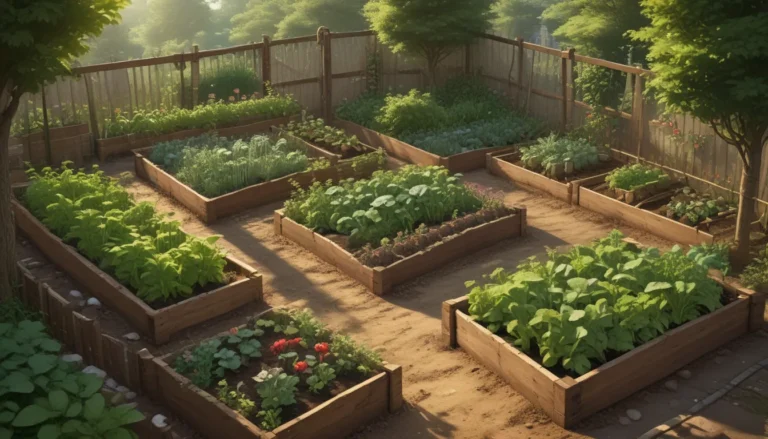How to Cultivate and Care for Creeping Phlox

Creeping phlox may not sound particularly enchanting at first, but don’t let the name fool you. With its bright hues of purple, pink, white, and blue flowers against lush green foliage, this plant is a delightful addition to any garden. In this comprehensive guide, we will delve into the world of creeping phlox, exploring its cultivation, growing tips, maintenance, propagation, and more.
Unveiling the Two Species: Phlox stolonifera vs. Phlox subulata
While both Phlox stolonifera and Phlox subulata are commonly known as creeping phlox, they do possess distinct characteristics. These perennials, native to North America, have earned a special place in the hearts of gardeners and Native Americans alike. The vibrant blooms of creeping phlox, which appear in early spring, have earned it the honor of being associated with April’s full moon, the “Full Pink Moon.”
The genus name “phlox” originates from the Greek word for “flame,” a nod to the intense colors of the flowers. Phlox stolonifera, known as the creeping phlox, and Phlox subulata, known as moss phlox, share similarities in appearance and biology, leading to interchangeability in common names. However, there are subtle distinctions between the two species.
Phlox subulata typically reaches a height of 6 inches and thrives in full sun. On the other hand, Phlox stolonifera can grow up to 12 inches tall and tolerates partial shade. Their contrasting leaf structures and sunlight requirements make them versatile choices for different garden settings.
Embrace the Beauty of an Easygoing Ground Cover
Creeping phlox serves as an adaptable, low-maintenance ground cover that blossoms in a variety of colorful shades. Ideal for cascading over stone walls or brightening up a rock garden, this perennial thrives in well-drained, humus-rich soil. Its sprawling growth habit extends up to 2 feet, making it a versatile companion plant for diverse landscapes. Planting creeping phlox on a slope enhances its visual appeal, showcasing its vibrant blooms and contributing to erosion prevention.
As a resilient plant, creeping phlox adapts well to various conditions, including soil types containing juglone from black walnut trees. However, its vigorous creeping nature may not suit gardeners seeking neatly organized plants, as it spreads rapidly to cover empty spaces.
Select Your Perfect Phlox Variety
With an array of cultivars available, choosing the right creeping phlox variety may present a delightful challenge. Whether you prefer vibrant pinks, purples, or blues, these hardy plants offer a plethora of options to suit your garden design. Popular P. stolonifera varieties like ‘Blue Ridge,’ ‘Pink Ridge,’ and ‘Bruce’s White’ reflect the beauty of the Appalachian Mountain ranges, their place of origin.
For pink enthusiasts, the striking ‘Candy Stripe’ P. subulata or the delicate ‘Snowflake’ variety are excellent choices to add a touch of elegance to your garden. The availability of a wide range of creeping phlox cultivars ensures that there’s a perfect match for every gardener’s preference.
Nurturing Your Phlox Collection
The cultivation of creeping phlox offers an opportunity for gardeners of all skill levels to propagate these stunning plants. Whether opting for seeds, cuttings, or transplants, the key lies in providing optimal growing conditions. When sowing seeds, use a well-drained potting medium with ample sunlight to facilitate seedling emergence. Cuttings and transplants are viable options for beginners, as these methods ensure successful establishment in your garden.
Proper spacing, at around 15 to 18 inches apart, promotes balanced growth and prevents overcrowding. Planting creeping phlox at ground level, followed by thorough watering, sets the stage for a flourishing garden display. With their adaptable nature, these plants flourish in late winter or early spring feeding, minimal watering, and suitable sunlight exposure.
Timely Maintenance for Thriving Plants
While creeping phlox requires minimal care, occasional maintenance practices enhance its health and appearance. Pruning stems after flowering and during winter encourages dense growth and second blooms. Propagation through division, stem cuttings, or root cuttings offers gardeners numerous options to expand their phlox collection. Vigilance against common pests like mites and diseases such as powdery mildew is crucial to safeguarding these vibrant blooms.
A Quick Reference Guide for Creeping Phlox Cultivation
- Plant Type: Herbaceous perennial
- Flower/Foliage Color: Pink, purple, blue, white
- Native to: Eastern/central US
- Maintenance: Low
- Hardiness (USDA Zone): 3-9
- Tolerance: Deer
- Bloom Time: Spring
- Soil Type: Sandy/loamy
- Exposure: Sun-facing, full or partial sun
- Soil pH: 6.0-8.0
- Growth Rate: 2 years
- Soil Drainage: Well-draining
- Spacing: 15-18 inches
- Companion Planting: Various low-growing shrubs
- Planting Depth: Shallow, with the top of the root ball level with the ground
- Uses: Ground cover, rock gardens, xeroscapes
- Height: 3-8 inches
- Spread: Up to 2 feet
- Water Needs: Low
- Pests & Diseases: Mites, powdery mildew
- Species: P. stolonifera, P. subulata
Embark on Your Creeping Phlox Journey
In conclusion, cultivating and caring for creeping phlox promises a rewarding experience, offering a burst of vibrant colors and effortless elegance to your garden. Whether you choose P. stolonifera or P. subulata, these resilient plants are bound to charm you with their captivating blooms and easy-to-maintain nature.
As you embark on your journey with creeping phlox, let your garden bloom with the beauty of these delightful perennials. Whether adorning a slope, attracting pollinators, or adding a touch of color to shaded corners, creeping phlox is a versatile choice for gardeners of all stripes. Share your favorite variety or any queries you may have in the comments below – we’re excited to hear from you!
With this expanded and informative guide, you now have a comprehensive resource on cultivating and caring for creeping phlox in your garden. May your gardening endeavors be enriched by the vibrant hues and easygoing charm of these beautiful perennial plants.





